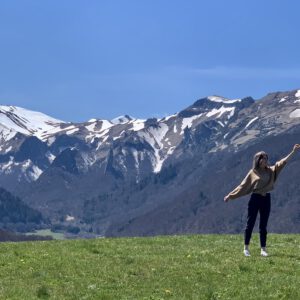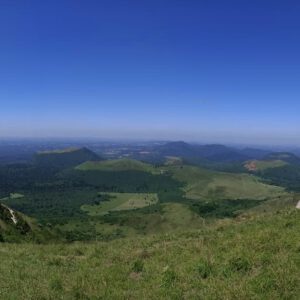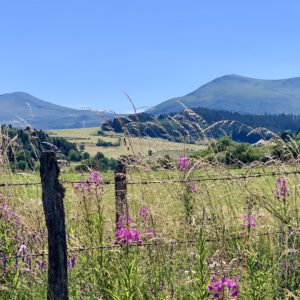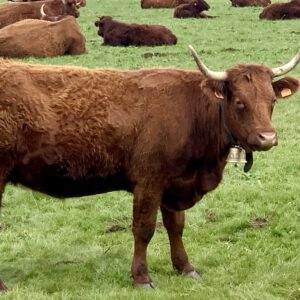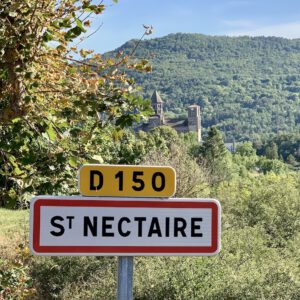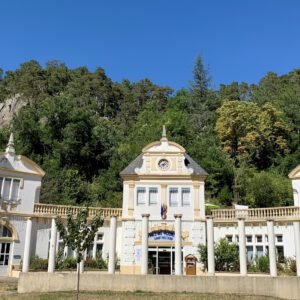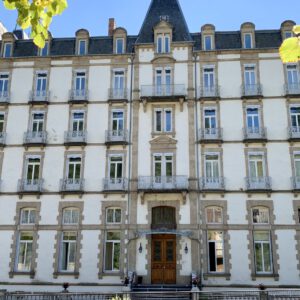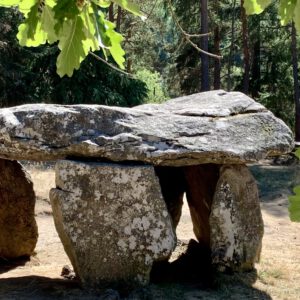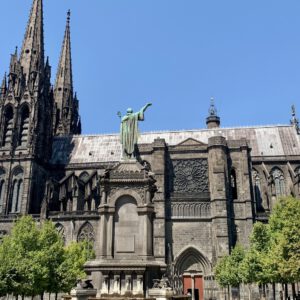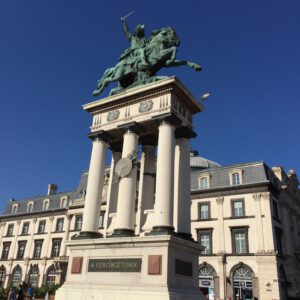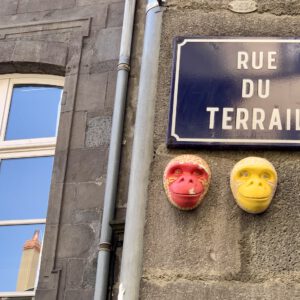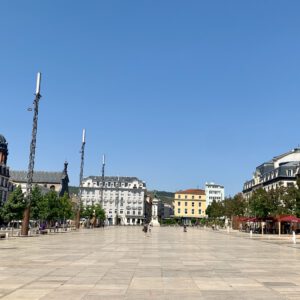Massif du Sancy
The Massif du Sancy is situated in the Auvergne in central France. It is a UNESCO World Heritage Site since 2018. The highest peak of this massif is the Puy de Sancy (1886 m), which is also the highest volcano in central France. During the summer season, this peak is accessible via various hiking trails or (partially) via a cable lift. From the top you have a magnificent all-around view, you can also see the Alps on a clear day, east of the Puy-de-Sancy. During the winter season, there are ski runs for downhill skiing or cross-country skiing in Super-Besse or Mont-Dore. There are also winter activities for non-skiers of snowshoeing, tobogganing, paragliding, dog sledding. Another unique experience is the Fantastic zip-line! All this can be found on ± 35 minutes by car from Villa St. Hubert.
There are also many charming mountain villages with their typical slate-roofs houses and other villages which have a predicate “one of the most beautiful villages in France” such as Montpeyroux, Saint-Floret, Usson and Saint-Saturnin.
Saint-Nectaire
Saint-Nectaire is a picturesque village in the Massif du Sancy in the heart of the Auvergne region, about 30 km south of Clermont-Ferrand, located in a green valley along the river of Le Courançon. The village consists of 2 parts: Saint-Nectaire-le-Haut, with its beautiful Romanesque church dating from the 12th century and Saint-Nectaire-le-Bas with its thermal activities (between 1900 and 2005).
Not only will you find a historical heritage in Saint-Nectaire, but also a culinary heritage as well: the ‘Saint-Nectaire’ cheese is one of the 5 cheeses from the Auvergne with an AOP quality mark. The cheese became famous in the 17th century, when Field Marshal Henri de Sennecterre (after whom it’s named) introduced the cheese to the court of the King Louis XIV. The cheese is famous for its soft (nut) taste and is made in one of the smallest protected areas of origin (AOP) in France, on meadows with wild flowers that contribute to the full aroma of the cheese. Without any doubt worth to taste!
Apart from the heritage, the village also offers you sportive and cultural entertainment. The Adventure Park with its forest and via-ferratas adventure courses , the Grottes du Cornadore (the first thermal baths in Roman times), The Petrifying Fountains where “man transforms water into stone” (Jean Serre, founder), beautiful walks in the village, in the Dolmen Park or along the Marais Salé where, due to the high salinity of the soil, you can see plants and flowers that normally only grow in Mediterranean areas.
Clermont-Ferrand
Clermont-Ferrand is the capital of the Auvergne. It is best known for Michelin (tyres), ASM (rugby), restaurants, many beautiful fountains and the short film festival.
The name Clermont-Ferrand has its origin from 2 distinct and rival cities, Clermont and Montferrand. In 1630, Louis XIII imposed, by the edict of Troyes, the unification of the two neighbouring cities. In 1731 this union was reaffirmed by Louis XV. Today there are still the 2 historic centres: the center of Clermont and that of Montferrand. In the historic center of Clermont there is the Cathedral of Notre Dame de l’Assomption which is a Gothic cathedral with its two tall pointed towers that are visible from afar. The cathedral is built out of Volvic stone, a black volcanic stone. This stone was also used for the construction of various monuments and buildings in the city center as well. There is also another church worth visiting: the Romanesque church of Notre-Dame-du-Port. This is a beautiful 11th century building and one of the 5 Romanesque churches of Auvergne. In summer time a tourist train connects the main squares of Clermont-Ferrand. The start is at Place de Jaude.
In the city center there is the Place de Jaude with beautiful buildings, fountains and the statues of Vercingetorix and General Dessaix de Nanteuil. Clermont-Ferrand is also a university city and there are many cozy cafes and restaurants, shops and boutiques. Did you know that Clermont-Ferrand is the home and city of Michelin? In the Michelin Museum, you can discover the whole history of tyres.
Besides Clermont-Ferrand, you will also find other pretty towns and villages in the vicinity of Saint-Nectaire such as Issoire (Romanesque church and clock tower), Besse-et-Saint-Anastaise (medieval village), Le Puy-en-Velay ( Notre Dame du Puy cathedral) and Thiers (The city of knives).



